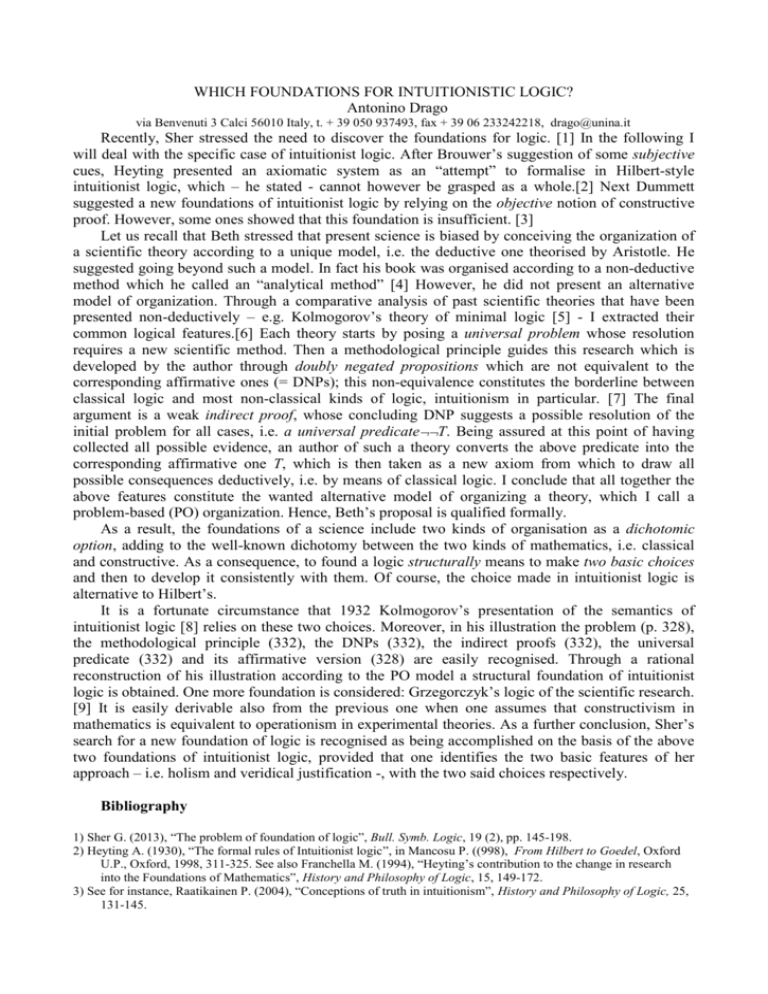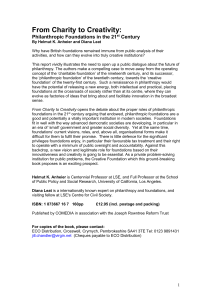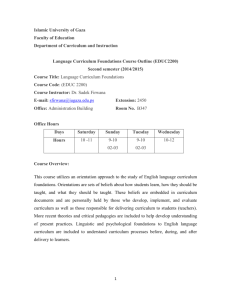TOWARDS A METAPHYSICS-FREE MATHEMATICAL LOGIC:
advertisement

WHICH FOUNDATIONS FOR INTUITIONISTIC LOGIC? Antonino Drago via Benvenuti 3 Calci 56010 Italy, t. + 39 050 937493, fax + 39 06 233242218, drago@unina.it Recently, Sher stressed the need to discover the foundations for logic. [1] In the following I will deal with the specific case of intuitionist logic. After Brouwer’s suggestion of some subjective cues, Heyting presented an axiomatic system as an “attempt” to formalise in Hilbert-style intuitionist logic, which – he stated - cannot however be grasped as a whole.[2] Next Dummett suggested a new foundations of intuitionist logic by relying on the objective notion of constructive proof. However, some ones showed that this foundation is insufficient. [3] Let us recall that Beth stressed that present science is biased by conceiving the organization of a scientific theory according to a unique model, i.e. the deductive one theorised by Aristotle. He suggested going beyond such a model. In fact his book was organised according to a non-deductive method which he called an “analytical method” [4] However, he did not present an alternative model of organization. Through a comparative analysis of past scientific theories that have been presented non-deductively – e.g. Kolmogorov’s theory of minimal logic [5] - I extracted their common logical features.[6] Each theory starts by posing a universal problem whose resolution requires a new scientific method. Then a methodological principle guides this research which is developed by the author through doubly negated propositions which are not equivalent to the corresponding affirmative ones (= DNPs); this non-equivalence constitutes the borderline between classical logic and most non-classical kinds of logic, intuitionism in particular. [7] The final argument is a weak indirect proof, whose concluding DNP suggests a possible resolution of the initial problem for all cases, i.e. a universal predicateT. Being assured at this point of having collected all possible evidence, an author of such a theory converts the above predicate into the corresponding affirmative one T, which is then taken as a new axiom from which to draw all possible consequences deductively, i.e. by means of classical logic. I conclude that all together the above features constitute the wanted alternative model of organizing a theory, which I call a problem-based (PO) organization. Hence, Beth’s proposal is qualified formally. As a result, the foundations of a science include two kinds of organisation as a dichotomic option, adding to the well-known dichotomy between the two kinds of mathematics, i.e. classical and constructive. As a consequence, to found a logic structurally means to make two basic choices and then to develop it consistently with them. Of course, the choice made in intuitionist logic is alternative to Hilbert’s. It is a fortunate circumstance that 1932 Kolmogorov’s presentation of the semantics of intuitionist logic [8] relies on these two choices. Moreover, in his illustration the problem (p. 328), the methodological principle (332), the DNPs (332), the indirect proofs (332), the universal predicate (332) and its affirmative version (328) are easily recognised. Through a rational reconstruction of his illustration according to the PO model a structural foundation of intuitionist logic is obtained. One more foundation is considered: Grzegorczyk’s logic of the scientific research. [9] It is easily derivable also from the previous one when one assumes that constructivism in mathematics is equivalent to operationism in experimental theories. As a further conclusion, Sher’s search for a new foundation of logic is recognised as being accomplished on the basis of the above two foundations of intuitionist logic, provided that one identifies the two basic features of her approach – i.e. holism and veridical justification -, with the two said choices respectively. Bibliography 1) Sher G. (2013), “The problem of foundation of logic”, Bull. Symb. Logic, 19 (2), pp. 145-198. 2) Heyting A. (1930), “The formal rules of Intuitionist logic”, in Mancosu P. ((998), From Hilbert to Goedel, Oxford U.P., Oxford, 1998, 311-325. See also Franchella M. (1994), “Heyting’s contribution to the change in research into the Foundations of Mathematics”, History and Philosophy of Logic, 15, 149-172. 3) See for instance, Raatikainen P. (2004), “Conceptions of truth in intuitionism”, History and Philosophy of Logic, 25, 131-145. 4) Beth E.W.(1959), The Foundations of Mathematics. A Study in the Philosophy of Science, Amsterdam, NorthHolland,. X, XII, XIV (reduced version in Foundations of Mathematics, New York, Harper, 1959, ch. I, 2; this chapter was suppressed in the Italian translation, Fondamenti della Matematica, Milano, Feltrinelli, 1963). 5) Kolmogoroff A.N. (1967), "On the principle of "tertium non datur"", in J. van Heijenoort (ed.) (1967), From Frege to Goedel, Harvard U.P., 416-437. Drago A. (2005), “A.N. Kolmogoroff and the Relevance of the Double Negation Law in Science”, in Sica G. (ed.) (2005), Essays on the Foundations of Mathematics and Logic, Milano, Polimetrica, 57-81. 6) Drago A. (2012), “Pluralism in Logic: The Square of Opposition, Leibniz’ Principle of Sufficient Reason and Markov’s principle”, in J.-Y. Béziau and D. Jacquette (eds.) (2012), Around and Beyond the Square of Opposition, Basel, Birkhaueser, 175-189. 7) D. Prawitz and P. E. Melmnaas (1968), "A survey of some connections between classical, intuitionistic and minimal logic", in A. Schmidt, K. Schuette and H.J. Thiele (eds.) (1968), Contributions to Mathematical Logic, Amsterdam, North-Holland, 215-229. Dummett M. (1977), Elements of Intuitionism, Oxford, Oxford U. P.. 8) Kolmogoroff A.N. (1932), "Zur Deutung der Intuitionistischen Logik", Math. Zeitfr., 35, 58-65 (Engl. Transl. In Mancosu P. (1998), From Hilbert to Goedel, Oxford, Oxford U.P., 328-334). 9) Grzegorczyk A. (1964) “A philosophically plausible formal interpretation of intuitionistic logic”, Indagationes Mathemat., 26, 696-601.







